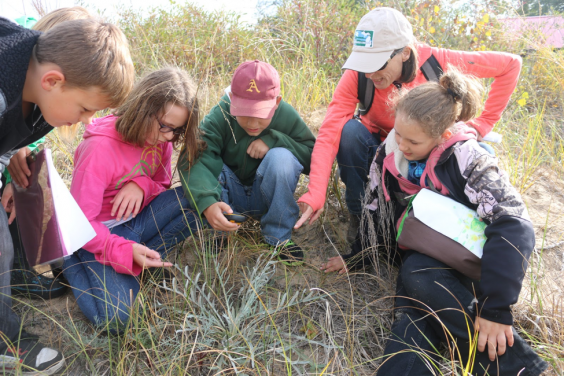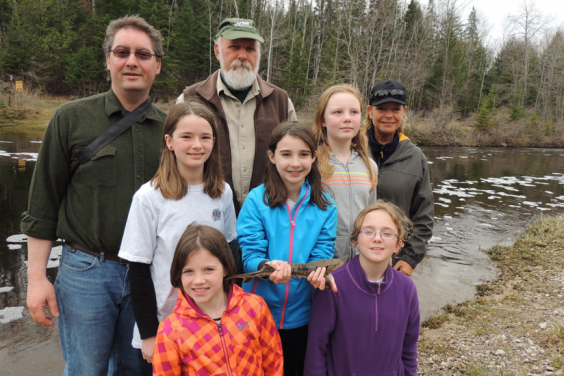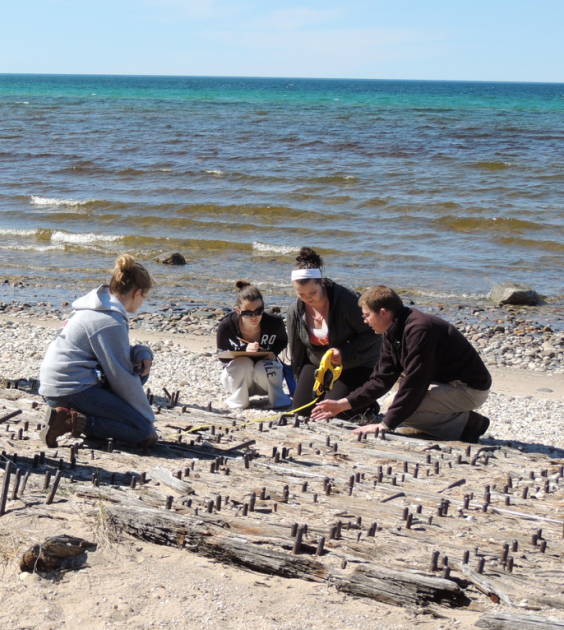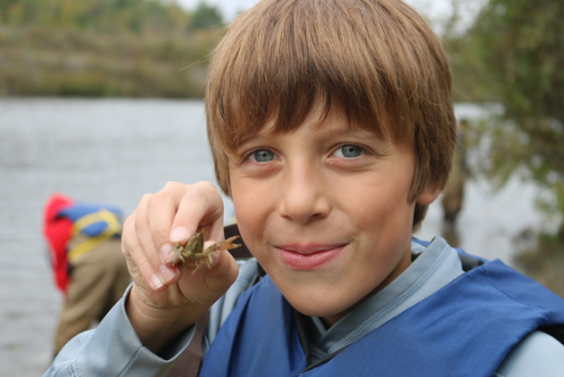ULIEA Q&A: Northeast Michigan Great Lakes Stewardship Initiative
UL and the North American Association for Environmental Education developed the UL Innovative Education Awards (ULIEA) in 2015 to honor programs in the United States and Canada that are leading the way in project-based learning, community citizenship and using the environment as a platform to STEM learning (E-STEM). In 2016, awards went to five organizations that created sustainable community solutions and provided innovative K-12 programming to solve real-world environmental issues.
The 2016 third-tier winner, Northeast Michigan Great Lakes Stewardship Initiative (NEMIGLSI), connects local students to their communities by providing place-based stewardship education opportunities linked to Great Lakes protection. We’re excited to tell you their story through their words.
Northeast Michigan Great Lakes Stewardship Initiative, 2016 Tier Three Winner
ULIEA: Tell us about your network:
The Northeast Michigan Great Lakes Stewardship Initiative (NEMIGLSI) is a regional network of education and community partners promoting quality place-based stewardship (PBSE) opportunities across northeast Michigan for the benefit of our youth and communities. We connect K-12 students and educators across eight counties in northeast Michigan to community partners, helping them to apply classroom learning goals while also protecting the Great Lakes and natural resources.
The NEMIGLSI network is part of a larger, statewide network and partnership, the Great Lakes Stewardship Initiative (GLSI). GLSI was established in 2007 with funding from the Great Lakes Fishery Trust and supports place-based stewardship education (PBSE) in schools and communities across Michigan.
ULIEA: Tell us about your award-winning program
Our entire NEMIGLSI network won the award. We find our work to be innovative since it connects so many community partners and schools together, weaving their different missions with our network’s overall goal to protect the Great Lakes and natural resources of northeast Michigan through hands-on, place-based stewardship education in and with the community.
This NEMIGLSI network operates and supports these efforts through three primary areas:
- School and Educator Support: We provide support for educator teams to engage local schools and youth in PBSE inquiries.
- Sustained Professional Development: We support the use of best practices that maximize the effectiveness of PBSE by providing access to quality local professional development opportunities that support PBSE processes, provide content-based learning, and facilitate networking among regional partners.
- Strong School-Community Partnerships: We link community development and environmental stewardship opportunities to schools and community partners with the purpose of creating youth-driven stewardship projects.
ULIEA: Why did you include an environmental piece with the STEM initiative?
Connecting to the environment is a great way to apply STEM learning goals, and our local area is rich in natural resources. All NEMIGLSI network schools are part of the Great Lakes watershed. Each river or stream in their county drains to the Great Lakes, a system with 20 percent of the world’s freshwater! Through stewardship efforts, students gain a better understanding of how humans impact ecosystems and what they can do to protect these resources. For instance, students map and research threatened and endangered species at state parks, manage schoolyard forests, and use film to educate fellow students and the community about the impact of single-use plastics. By connecting learning and stewardship efforts, students better understand the people and natural resources within their communities.
ULIEA: How has your program been received by the community?
The community is a part of the NEMIGLSI network. Students complete stewardship efforts that benefit their community, and the community serves as partners for these projects. By grounding efforts in our local places, students serve as leaders for their peers and neighbors. Many community members are impressed by the work students complete, and others (including network partners) are jealous of how they apply their learning. Through their stewardship efforts, students present to city councils, school boards, and community groups allowing everyone to gain a better understanding of the importance of these school-community partnerships.
ULIEA: What is your program's biggest success? What do you hope to achieve?
Our network and partnership’s biggest success is the student impact. These students learn how to be leaders in their community while completing place-based stewardship efforts. They make connections to their communities, learn about careers, protect and improve their local environment, AND have fun. We engage about 20 percent of northeast Michigan students in stewardship efforts, and we hope these students will serve as Great Lakes stewards today and in the future.
ULIEA: How will the ULIEA grant money help your program?
The UL Innovative Education Award helped us bolster our E-STEM efforts by allowing us to launch mini-grant program to support local stewardship efforts. Schools have received up to $2,000, which they’ve used to install native schoolyard habitats, develop hydroponic systems, raise fish in the classroom, and more. Our network also used some of the funds in a matching campaign to increase network sustainability. We matched $10,000 from the ULIEA with $10,000 in donations from the community resulting in $20,000 added to our network’s endowment fund.
ULIEA: What does it mean to be a ULIEA winner?
We are honored to be a UL Innovative Education Award winner. Through this award, we networked with many partners, including UL and NAAEE, and we learned about different youth engagement strategies from the past and current winners. We are applying these lessons learned in northeast Michigan communities, and we look forward to continuing this partnership for years to come.



